Coding has evolved as an essential ability in today’s technology-driven world, allowing youngsters to become independent thinkers and future-ready contributors. You, as a parent, may be wondering why your primary school-aged children need a coding education and what they may gain from it. In this article, we’ll talk about why teaching kids to code is so crucial, what it can do for them, and what you can do to help them succeed in the field.
Table of contents
- Understanding the Basics of Coding
- Building Blocks of a Coding Curriculum
- Integrating STEM Concepts into the Coding Curriculum
- Project-Based Learning in Coding Education
- Incorporating Creativity and Art in Coding
- Coding Ethics and Digital Citizenship
- Assessing and Evaluating Coding Skills
- Coding Beyond the Classroom
- Conclusion
- Frequently Asked Questions(FAQ’s)
Understanding the Basics of Coding
Introducing the basics of coding is a fantastic way to make coding for kids accessible and enjoyable. Before diving into coding languages and platforms, kids need to grasp fundamental coding concepts.
A. Introduction to Coding Concepts for Kids
- Algorithms and Problem Solving: Kids learn to break down tasks into step-by-step instructions to solve problems effectively.
- Sequencing and Logical Thinking: Understanding the importance of the order in which instructions are given and developing logical thinking skills.
- Variables and Data Types: Introducing the concept of variables to store and manipulate data, such as numbers, text, or colors.
B. Exploring Different Programming Languages for Kids
- Scratch: A scratch coding for kids allows to create interactive stories, games, and animations.
- Python: A versatile and beginner-friendly text-based language used in web development, data analysis, and more. Python programming for kids offer exciting opportunities for young minds to unleash their creativity and develop valuable coding skills.
- JavaScript: A language commonly used for web development and allows kids to create interactive websites and games.
C. Introducing Coding Tools and Platforms for Kids
- Kid-Friendly Coding Apps and Websites: Numerous apps and websites are designed specifically for young learners, offering engaging coding activities and games.
- Physical Coding Kits and Robotics Platforms: Hands-on coding experiences with physical kits and robots, fostering a deeper understanding of coding concepts.
- Online Coding Courses and Tutorials: Accessible online resources that offer structured coding lessons and projects.
Also check out coding app for kids.
Building Blocks of a Coding Curriculum
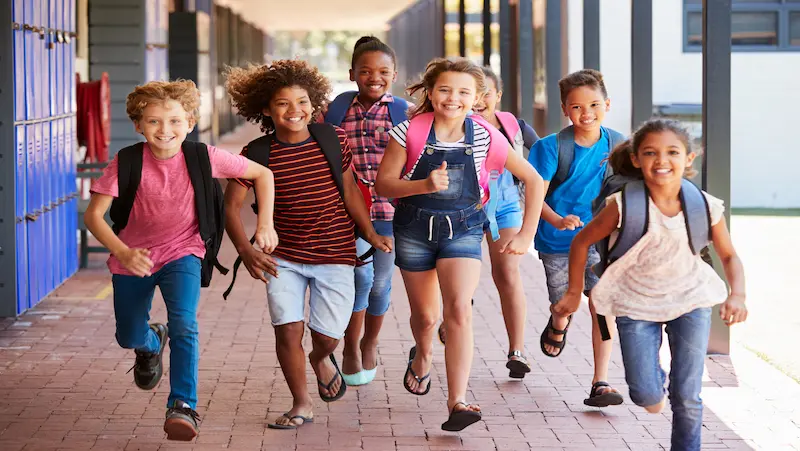
A well-designed coding curriculum should be divided into different levels to cater to the varying skill levels of elementary students.
Level 1: Introduction to Coding
- Understanding Basic Coding Terminology: Introducing kids to coding-specific vocabulary and concepts.
- Writing Simple Programs and Scripts: Teaching kids to create basic programs with clear objectives.
- Creating Basic Interactive Projects: Allowing kids to build interactive projects that respond to user input.
Level 2: Intermediate Coding Concepts
- Exploring Conditionals and Loops: Introducing conditional statements and loops to make programs more dynamic.
- Building Games and Animated Projects: Encouraging kids to create their own games and animations using coding concepts.
- Solving Coding Challenges and Puzzles: Presenting coding challenges that promote problem-solving skills.
Level 3: Advanced Coding Skills
- Diving into Data Structures and Algorithms: Introducing more complex data structures and algorithms to solve advanced problems.
- Developing Complex Projects and Applications: Allowing kids to work on more sophisticated projects that combine multiple coding concepts.
- Tackling Advanced Coding Problems: Challenging students with real-world coding problems to enhance their critical thinking.
Integrating STEM Concepts into the Coding Curriculum
Integrating STEM (Science, Technology, Engineering, and Mathematics) concepts into the coding curriculum creates a well-rounded learning experience for elementary students. By demonstrating the connections between coding and various STEM fields, educators can help children understand the practical applications of coding in real-world scenarios. Engaging learning programs for kids in STEM education nurture their curiosity and foster a passion for science, technology, engineering, and mathematics. Let’s delve deeper into each aspect:
A. Math and Coding: Making Connections
Mathematics and coding go hand in hand. Coding involves the use of mathematical concepts to perform calculations, manipulate data, and solve problems. By making connections between maths and coding, students can better comprehend the relevance of both subjects.
- Arithmetic: Coding often requires the use of arithmetic operations, such as addition, subtraction, multiplication, and division. For instance, when creating a game, students may use arithmetic to calculate scores or track player movements.
- Geometry: Geometry plays a role in coding, especially when dealing with visual elements. Students may use geometric principles to position objects on the screen or create geometric patterns in their coding projects.
- Algebra: Coding involves the use of variables, which are fundamental to algebra. Students can learn to represent relationships between variables and use algebraic expressions to make their code more efficient and dynamic.
B. Science and Coding: Exploring Scientific Concepts
Coding can be a valuable tool for exploring scientific concepts and conducting simulations, allowing students to better understand various scientific phenomena. By applying coding to science, students can visualize and analyze complex systems.
- Simulating Experiments: Coding enables students to create simulations of scientific experiments that may be impractical or dangerous to perform in real life. For example, they can simulate physics experiments, chemical reactions, or ecological systems.
- Modelling Natural Phenomena: Through coding, students can model natural phenomena like weather patterns, planetary movements, or the spread of diseases. These simulations help students grasp scientific principles and observe cause-and-effect relationships.
- Data Analysis: Coding is instrumental in handling and analysing large datasets, which is essential in many scientific fields. Students can learn to extract valuable insights from data and present their findings visually.
Check out programming classes for kids.
C. Engineering and Coding: Building Problem-Solving Skills
Engineering and coding complement each other, as coding is an essential tool in the engineering process. By introducing coding in an engineering context, students can develop critical problem-solving skills.
- Prototyping: Coding allows students to create virtual prototypes of engineering designs before building physical models. This iterative process helps in refining and optimizing engineering solutions.
- Automation and Robotics: Coding is the backbone of automation and robotics. Students can learn to program robots to perform specific tasks, encouraging them to think creatively about engineering challenges. Robotics for kids offers an exciting hands-on experience, sparking their interest in technology and engineering.
- Logical Thinking: Engineering often involves breaking down complex problems into manageable steps. Coding requires similar logical thinking, as students write algorithms to solve problems step-by-step.
Join the CodeCHAMPS community and embark on a journey of coding and discovery.
Project-Based Learning in Coding Education
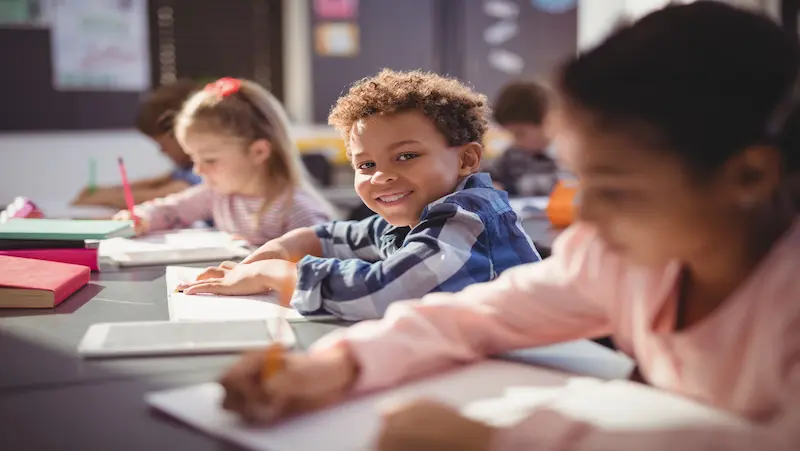
Project-based learning immerses kids in hands-on coding experiences with real-world applications.
A. Benefits of Project-Based Learning in Coding
- Fosters Creativity: PBL allows students to express unique ideas and solutions in coding projects.
- Encourages Collaboration: Group projects promote teamwork and knowledge exchange.
- Develops Critical Thinking: Students analyse, strategize, and make informed decisions in real-world coding challenges.
- Enhances Problem-Solving Skills: Students troubleshoot and iterate to overcome obstacles in their projects.
- Increases Engagement and Motivation: Real-world applications make coding more meaningful and engaging.
B. Designing Coding Projects for Real-World Applications:
- Identify Real-World Problems: Students research and address practical challenges with coding.
- Develop Practical Solutions: Coding skills are applied to create usable solutions.
- Promote User-Centric Design: Students consider end-users’ needs and experiences.
- Showcase the Impact: Celebrate and present project outcomes to relevant stakeholders.
C. Collaborative Coding Projects and Teamwork:
- Team Formation: Diverse groups encourage learning from peers’ perspectives.
- Communication and Planning: Effective communication and task division are emphasised.
- Conflict Resolution: Conflicts are opportunities to teach resolution skills.
- Shared Responsibility: Each team member contributes with defined roles.
- Celebrate Team Success: Acknowledge achievements to reinforce teamwork’s value.
Incorporating Creativity and Art in Coding
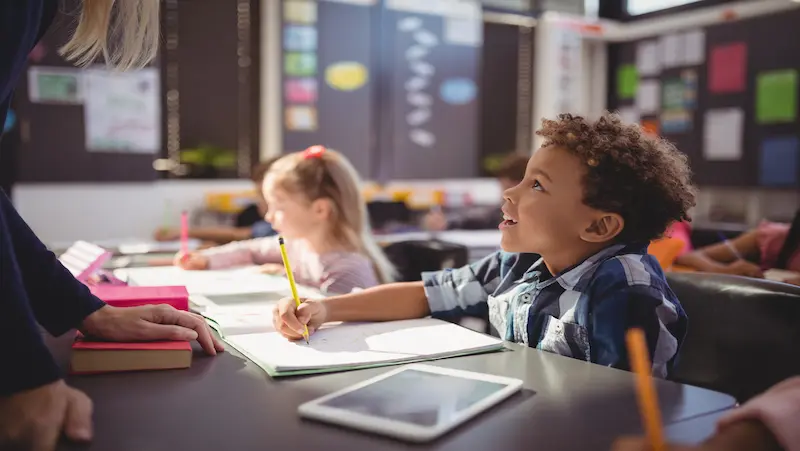
Coding is a versatile skill that extends beyond logic and problem-solving. It also serves as a powerful tool for kids to unleash their creativity through art and storytelling. Here’s an elaboration on each aspect of incorporating creativity in coding education:
A. Interactive Storytelling with Coding:
Interactive storytelling combines traditional storytelling elements with interactive elements, allowing the audience to actively engage with the narrative. Encouraging kids to create interactive stories or digital narratives using coding provides them with a platform to explore their imagination and bring their stories to life in dynamic ways.
Also check out scary stories for kids.
B. Creating Visual Art and Animations:
Coding tools offer opportunities for kids to create digital art and animations, opening a world of creative expression through technology. Introducing kids to this realm of digital art not only enhances their artistic skills but also provides a fresh and engaging perspective on coding.
C. Music and Sound Design in Coding Projects:
Coding can be utilised to compose music and incorporate sound effects into coding projects, adding another layer of creativity and depth to students’ work.
Coding Ethics and Digital Citizenship
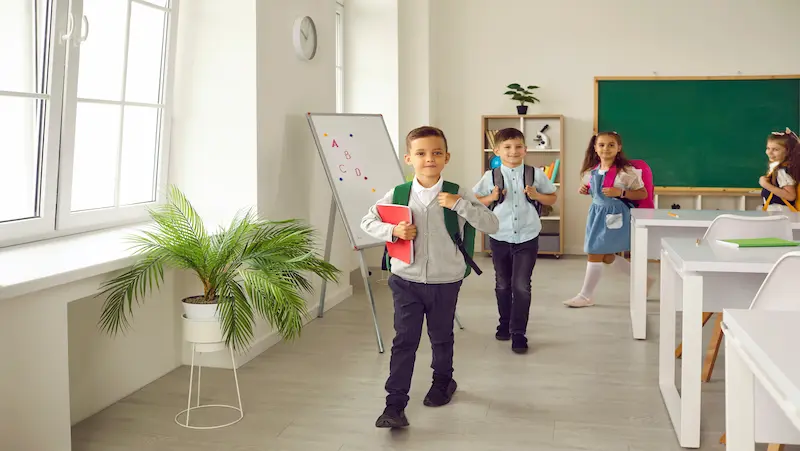
In the digital age, as technology becomes increasingly integrated into our daily lives, it is crucial to teach children about ethical considerations and responsible use of technology. By instilling these values in young learners, we ensure that they become responsible digital citizens who understand the impact of their actions online and in coding projects. Let’s elaborate on each aspect of this important topic:
A. Understanding Ethical Considerations in Coding:
- Plagiarism and Copyright: Kids need to learn that using someone else’s code or work without proper attribution is not only unethical but also illegal. Educators should emphasize the importance of giving credit to the original creators and respecting intellectual property rights.
- Respecting Others’ Work: Encourage students to create their original code while appreciating and respecting the work of others. Teaching them to seek permission before using or modifying someone else’s code fosters a culture of respect and integrity.
- Open Source and Collaboration: Introduce students to the concept of open-source coding and the value of collaboration in the coding community. Emphasis the importance of contributing positively to open-source projects and respecting their licenses.
Check out coding programs for kids.
B. Teaching Responsible Use of Technology:
- Internet Safety: Teach children about online safety, including the risks of sharing personal information and interacting with strangers online. Instill habits like using strong passwords, avoiding suspicious links, and understanding the importance of privacy settings on social media platforms.
- Cyberbullying Awareness: Educate students about the negative impact of cyberbullying and the importance of treating others with kindness and respect online. Encourage them to speak up if they witness cyberbullying and seek help from trusted adults.
- Balancing Screen Time: Help kids develop healthy screen time habits by encouraging a balance between online activities, physical activities, and face-to-face interactions.
C. Promoting Digital Citizenship and Online Safety:
- Good Online Etiquette: Teach students about proper online behaviour, including being polite and respectful when interacting with others in virtual environments. Explain that online interactions have real-world consequences and that kindness and empathy are essential in the digital space.
- Reliable Information: Help children discern credible sources of information and teach them to fact-check before accepting information as true. In the era of misinformation, critical thinking skills are vital to navigating the online world responsibly.
- Handling Online Conflict: Guide students on how to resolve conflicts constructively in digital settings, emphasising the value of communication and seeking resolution peacefully.
Assessing and Evaluating Coding Skills
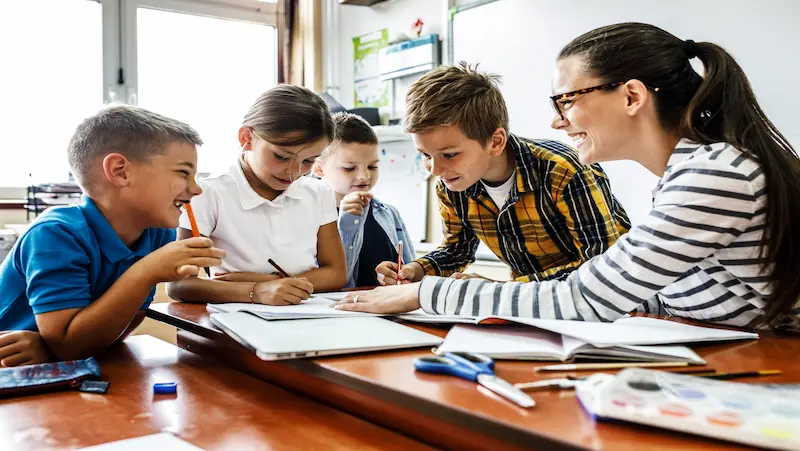
Assessing and evaluating coding skills is a crucial aspect of personalized learning to ensure children’s progress in coding education. Here’s an elaboration on assessment strategies in coding education:
A. Formative and Summative Assessments in Coding Education:
Formative assessments are ongoing evaluations conducted during the learning process. In coding education, these assessments involve reviewing students’ code, observing their problem-solving approach, and providing feedback on their coding projects as they progress. This continuous feedback helps educators identify areas where students may need additional support and tailor their teaching accordingly.
B. Feedback and Reflection for Continuous Improvement:
Providing constructive feedback is crucial in coding education. Educators should offer specific and actionable feedback that highlights areas of improvement and acknowledges students’ strengths. This feedback should focus on both the coding logic and the clarity and efficiency of the code. Encouraging students to reflect on their coding projects and process helps them develop a growth mindset and take ownership of their learning. By reflecting on their coding challenges, successes, and areas for improvement, students become more proactive in enhancing their coding skills.
C. Recognizing and Celebrating Coding Achievements:
Celebrating coding milestones, such as successfully completing a complex project or mastering a new coding concept, motivates students to keep pushing their boundaries. Recognizing their achievements reinforces a sense of accomplishment and boosts their self-confidence. Encouraging students to participate in coding competitions or showcases provides opportunities for them to showcase their skills and gain recognition for their hard work. These events promote healthy competition and inspire students to excel further in coding. Additionally, it’s essential to recognize progress at all levels, as not all students may achieve the same milestones at the same time. Acknowledging individual growth and effort fosters an inclusive and supportive learning environment.
Coding Beyond the Classroom
Extracurricular coding activities play a crucial role in enriching a child’s coding journey beyond the confines of the classroom. These activities offer unique opportunities for students to develop their coding skills, explore new technologies, and foster their passion for technology and innovation. Enrolling in a coding bootcamp for kids provides a structured and immersive coding education for young learners, preparing them for a tech-savvy future.
A. Coding Clubs and Extracurricular Activities:
Participating in coding clubs and after-school programs exposes students to a collaborative and supportive learning environment. Through these activities, kids can engage in:
- Collaborative Learning: Working with peers who share similar interests sparks creativity and fosters a sense of camaraderie.
- Specialised Focus: Delving deeper into specific coding languages or technologies not extensively covered in the regular curriculum.
- Mentorship Opportunities: Interacting with older students, community enthusiasts, or tech professionals provides guidance and inspiration.
B. Coding Competitions and Hackathons for Kids:
Coding competitions and hackathons present exciting challenges that encourage students to push their boundaries and explore innovative solutions:
- Problem-Solving: Students face coding challenges that require creative and strategic thinking to solve.
- Time Management: Working within time constraints enhances their ability to handle pressure and manage time effectively.
- Recognition and Rewards: Excelling in these events brings recognition and rewards, boosting confidence and motivation.
C. Engaging with Coding Communities and Events:
Connecting with coding communities and attending events nurtures a sense of belonging and enthusiasm for young coders:
- Networking: Expanding their network and connecting with like-minded individuals, including professionals in the field.
- Exposure to Real-World Applications: Learning about coding’s real-world applications across industries and domains.
- Inspiration and Role Models: Meeting successful individuals in the coding community serves as inspiration for future endeavours.
Conclusion
In conclusion, a comprehensive coding curriculum empowers elementary students with essential skills for the future. It fosters creativity, problem-solving abilities, and a passion for STEM. By creating a positive learning environment, integrating coding with other STEM concepts, and encouraging project-based learning, kids can develop a lifelong love for coding, preparing them to thrive in a technology-driven world. So, embrace the world of coding and watch your children’s potential soar! Happy coding!
BrightChamps also provides engaging programs on financial literacy for kids, empowering them with essential skills of money management for kids from an early age.
Unlock a world of possibilities with BrightChamps, your partner in fostering holistic growth and education for children. From interactive resources to engaging activities, we provide a comprehensive platform that nurtures creativity, critical thinking, and character development.
Explore the BrightCHAMP blog page to discover educational insights, tips, and strategies to enhance your child’s learning experience.
Frequently Asked Questions(FAQ’s)
A1: Elementary students can enjoy various exciting science experiments that spark curiosity and foster hands-on learning. Examples include creating a volcano eruption using baking soda and vinegar, exploring buoyancy with sink-or-float experiments, and making a rainbow using water, a prism, or a CD. Growing plants from seeds, making slime, and investigating the properties of magnets are also engaging experiments for young learners.
A2: Integrating technology into STEM activities enhances learning experiences for elementary students. They can use coding platforms like Scratch to create interactive stories and games, explore virtual field trips to learn about ecosystems and space, and use educational apps to practice math and science concepts. Robotics kits allow hands-on building and programming of robots, promoting problem-solving and critical thinking skills.
A3: Math games and puzzles can make learning fun and engaging for elementary students. Examples include math bingo, where they practice addition or multiplication, and math scavenger hunts to reinforce number recognition and measurement skills. Sudoku puzzles, tangrams, and logic puzzles challenge their problem-solving abilities, while interactive math apps and online games offer interactive learning experiences.
A4: Elementary students can enjoy engineering challenges that encourage creativity and problem-solving. Building structures with toothpicks and marshmallows, designing paper airplanes for distance or accuracy, and constructing simple machines using household items are suitable challenges. They can also create homemade water filters or design and build a bridge using craft sticks.
A5: Integrating art and design into STEM activities enriches students’ creativity and multidisciplinary learning. They can design and build art-inspired robots, create 3D models of plant and animal cells, and illustrate scientific concepts through drawings and visual representations. Infusing art in STEM projects, such as making artistic displays for science experiments, allows students to express their understanding in unique ways.
A6: Environmental and sustainability activities empower elementary students to become responsible stewards of the planet. They can participate in recycling projects, conduct energy audits in their homes or schools, and plant gardens to learn about sustainable agriculture. Water conservation experiments, nature walks, and learning about endangered species are also impactful activities.
A7: Collaborative projects foster teamwork and communication skills among elementary students. Working together on science experiments, engineering challenges, or coding projects promotes peer learning and problem-solving. Collaborative research projects allow students to share their findings and insights, leading to a deeper understanding of STEM concepts.
A8: Introducing elementary students to STEM careers broadens their horizons. They can explore careers like marine biologists, environmental scientists, software developers, aerospace engineers, and medical professionals. Bringing in guest speakers or arranging field trips to STEM-related workplaces can inspire students and show them the real-world applications of STEM fields.
A9: STEM activities can be seamlessly integrated into everyday life at home. Cooking together involves math and chemistry concepts, while gardening teaches biology and environmental science. Family science experiments, building projects, and coding games or puzzles provide enjoyable opportunities for learning while spending quality time together.
A10: There are numerous resources available for STEM activities for elementary students. Websites like NASA’s “STEM Engagement” and the National Geographic Kids offer interactive and educational content. Educational apps like “Khan Academy Kids” and “ScratchJr” promote coding and problem-solving. Books such as “Rosie Revere, Engineer” and “The Magic School Bus” series provide engaging STEM stories and lessons.
A11: To make STEM education more inclusive and accessible, educators should create diverse and inclusive learning environments that value all students’ backgrounds and abilities. Offering a variety of learning materials and approaches can accommodate different learning styles. Providing equal access to technology, equipment, and resources ensures all students have the opportunity to engage in STEM activities.
A12: STEM learning can be assessed through various methods. Teachers can use observations during hands-on activities, review students’ project work and documentation, and conduct quizzes or tests on STEM concepts. Portfolios, presentations, and peer assessments can also provide valuable insights into students’ understanding and progress in STEM subjects.


 We are an army of educators and passionate learners from BrightChamps family, committed to providing free learning resources to kids, parents & students.
We are an army of educators and passionate learners from BrightChamps family, committed to providing free learning resources to kids, parents & students.












